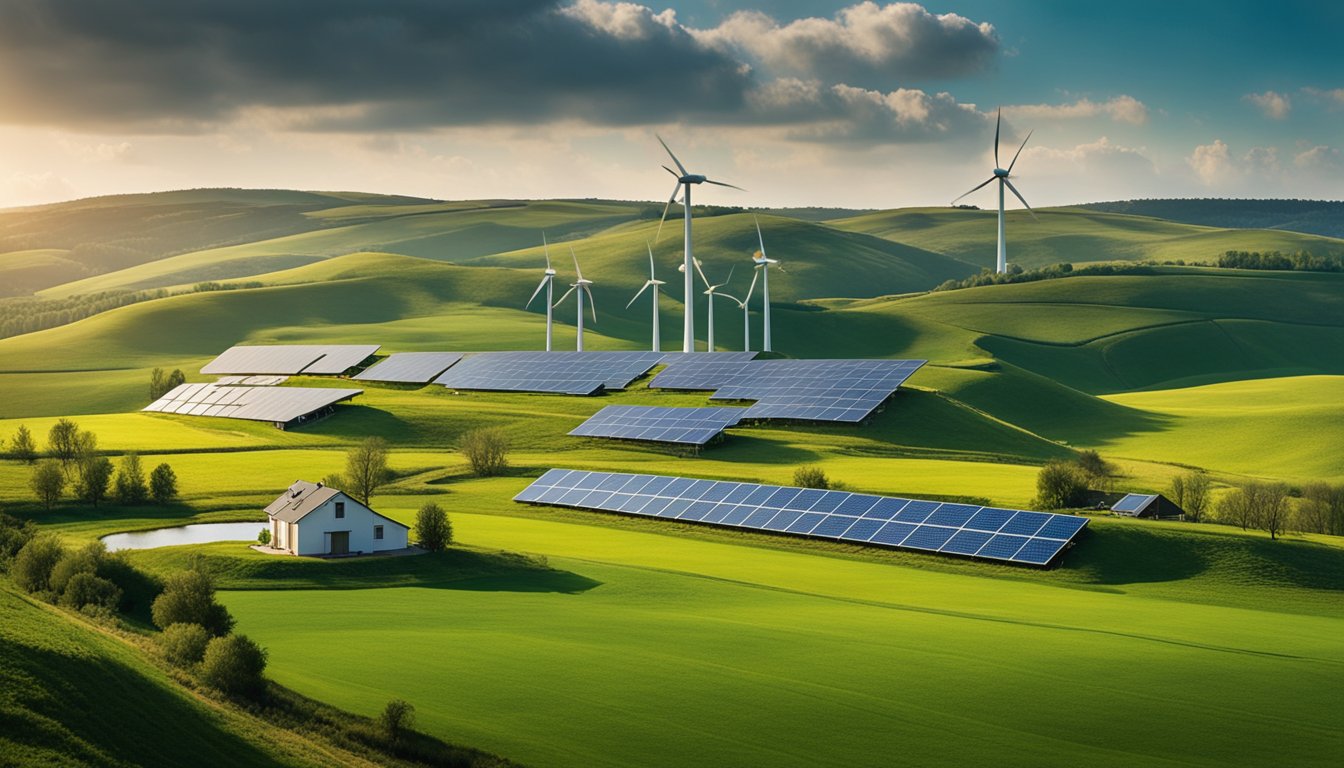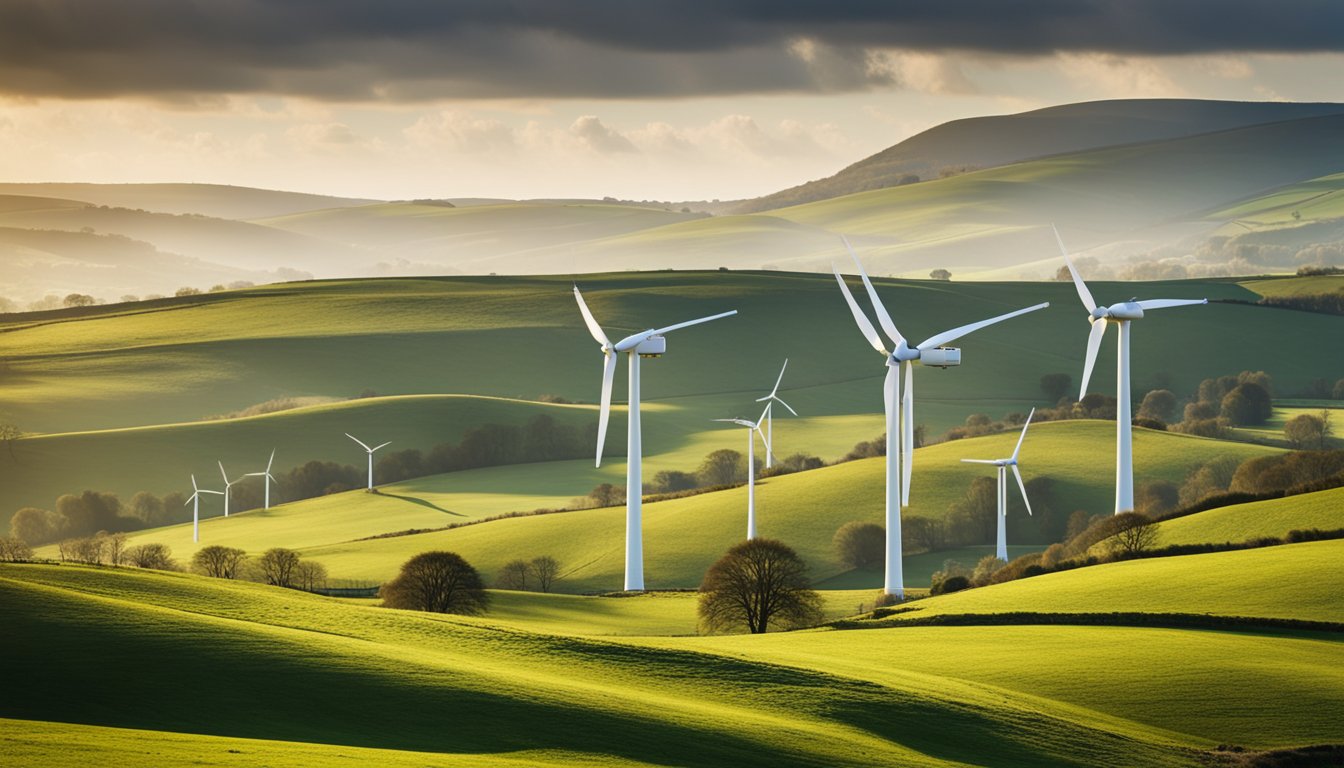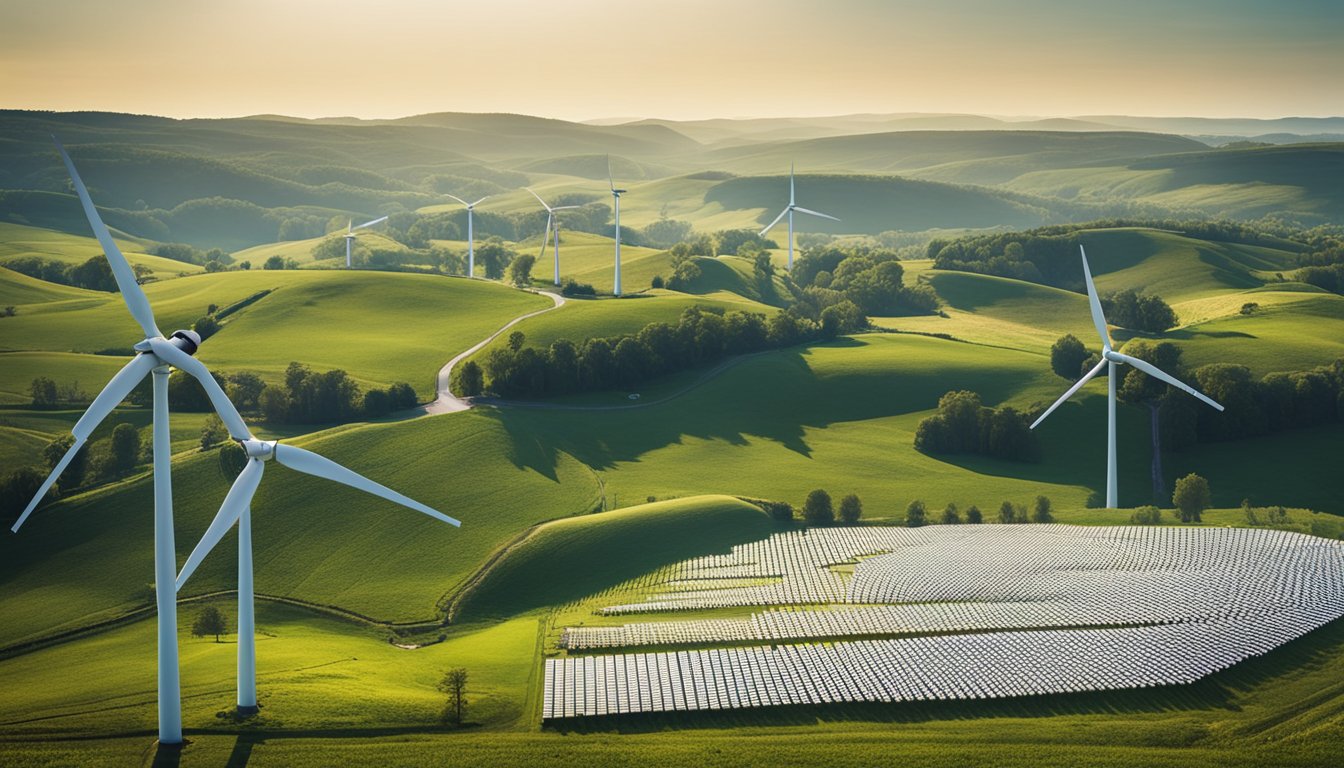Late updated: 16 Nov 2024 15:11
Written by: Oliver Bennett
Emerging Renewable Energy Technologies for UK Countryside: A Sustainable Future Outlook
The UK countryside is becoming a vibrant testing ground for emerging renewable energy technologies as we strive towards net-zero goals. With wind and solar leading the charge in the renewable energy boom, innovative solutions such as hydrogen and battery energy storage are gaining momentum. These technologies not only aid in decarbonisation but also ensure energy security amidst the growing impacts of climate change.

Investment in these technologies is supported by government policies designed to catalyse the transition to clean energy, alleviating reliance on fossil fuels. Beyond just the environmental impact, this transformation promises to revitalise rural areas, providing economic opportunities and promoting sustainable development. The implementation of these technologies, while promising, does face challenges such as supply chain issues and workforce shortages.
As we explore these developments, the rural landscape emerges as a key player in the UK's green energy transition, combining innovation with tradition to create a sustainable future. Our countryside, once primarily seen for its agricultural value, now represents a cornerstone in our mission to create a more sustainable planet. By embracing these technological breakthroughs, we're not only protecting our environment but also preserving the unique character of our rural areas.
Key Takeaways
- New technologies are driving the transition to clean energy in the UK countryside.
- Government support plays a crucial role in facilitating these innovations.
- Challenges like workforce shortages must be addressed for successful implementation.
Innovations in UK Countryside Renewable Energy

Our focus on renewable energy within the UK countryside highlights key areas of emerging technologies such as bioenergy, wind power, solar integrations, and energy storage, each contributing significantly to our transition towards a sustainable future.
Advancements in Bioenergy and Biomass Technology
In the UK countryside, bioenergy is an essential component of our renewable strategy. Innovative technologies are being developed to efficiently convert organic materials, like agricultural residues and waste, into energy. Our commitment involves leveraging these advances to enhance the sustainability of rural areas.
A focus on improving biomass technology—such as advanced biogas systems and sustainable woodchip production—enables more efficient localised energy solutions. These technologies not only reduce carbon emissions but also support local economies and create new employment opportunities in rural communities. By adopting these advancements, we significantly contribute to our British Energy Security Strategy.
Potential of Onshore and Offshore Wind
The UK is known for its powerful winds, making onshore and offshore wind technologies crucial for our energy landscape. Onshore wind farms are providing decentralised energy, significantly bolstering countryside electrification. Offshore wind, with its high capacity, plays a vital role in our clean power strategy by 2030.
Recent innovations focus on improving turbine efficiency and reducing environmental impacts. New designs in blade technology and better site placements minimise the adverse effects on wildlife and landscapes. Our support from Innovate UK facilitates these advancements, enabling us to maximise energy yields and meet increasing demand while preserving the countryside's natural beauty.
Solar Power Integration and Efficiency
Solar energy is transforming our approach to countryside sustainability. Recent progress in solar photovoltaic (PV) technology has improved energy capture and efficiency dramatically. We are integrating more efficient PV systems into rural landscapes, utilising both rooftops and ground-mounted panels.
This expansion supports our goal for increased clean power production. Enhanced integration techniques, such as agrivoltaics—combining agriculture and solar energy—optimise land use without compromising agricultural productivity. These innovative practices ensure that our solar technologies contribute to sustainable energy systems and robust rural economies.
Developing Energy Storage Solutions
Energy storage is pivotal in overcoming the intermittency issues often associated with renewables like wind and solar. Advances in battery technology and other energy storage solutions allow us to store excess energy for periods of low production.
Our focus includes the development of next-generation batteries, improved by recent innovations, such as lithium and potential carbon capture technologies. These advancements are integral to creating a stable, reliable energy grid in the countryside. Exploring hydrogen production also presents opportunities for long-term storage and sustainable energy systems. By prioritising storage solutions, we enhance the efficiency and reliability of our overall renewable energy strategy.
Sustainable Energy Implementation and Challenges

Implementing sustainable energy in the UK countryside involves navigating numerous challenges. Key considerations include the policy framework supporting net zero ambitions, environmental planning obligations, economic effects on energy bills, and community involvement.
Net Zero Strategy and Policy Framework
The UK's commitment to a Net Zero Future necessitates robust strategies and policies. Our Net Zero Strategy outlines a path to eliminating carbon emissions by 2050. This requires significant investment in low-carbon technologies and industrial decarbonisation. Policies emphasise energy efficiency, such as promoting heat pumps and energy innovation. The Office of Gas and Electricity Markets plays a critical role in regulating these transitions. Through supportive policies, we aim to decrease dependency on fossil fuels and enhance energy independence. International collaboration is also vital, sharing technologies and experiences to reach shared low-carbon goals.
Environmental and Planning Considerations
Biodiversity net gain and environmental impact assessments are crucial in planning renewable projects in rural areas. Our planning system must balance energy development with ecological preservation. These projects often face concerns about visual impacts and disruption to landscapes. To address these, we employ environmentally sensitive designs and location assessments. It's important that green technologies are integrated harmoniously with local ecosystems. Carbon capture and storage can be part of broader energy consumption strategies that minimise ecological footprints. Ensuring compliance with regulatory standards helps protect and enhance biodiversity while pursuing sustainable energy goals.
Economic Aspects and Energy Bills Impact
Economic considerations play a pivotal role in the transition to sustainable energy. Implementation can lead to initial cost increases, affecting energy bills. However, long-term savings should offset these through reduced reliance on volatile fossil fuel markets. Developing green technologies contributes to UK jobs and stimulates local economies. Energy efficiency measures can lower costs for consumers, promoting broader energy demand reductions. By investing in low-carbon infrastructure, we support both regional and national economic growth. Balancing initial investment with these long-term gains is crucial for a feasible transition.
Community Engagement and Interdisciplinary Research
Engaging local communities is essential for successful energy projects. Transparent communication and consultation foster trust and cooperation. By involving residents early, we address concerns and harness local knowledge. Our interdisciplinary research brings together diverse expertise to innovate solutions that meet local needs. Collaboration with academic institutions and industry leaders boosts energy efficiency and supports green technologies. As we work to achieve a Net Zero Future, embedding community insights ensures that projects support local priorities and contribute positively to rural life. Community involvement can transform potential resistance into enthusiastic participation, emphasising mutual benefits.
Frequently Asked Questions

We address some common queries regarding emerging renewable energy technologies and their impact in rural areas of the UK. We explore various projects, advancements, government incentives, and the challenges faced.
What types of renewable energy projects are currently being planned for rural areas in the UK?
In the UK countryside, wind and solar farms are prominent projects. We also see developments in biomass energy, utilising agricultural waste. Offshore wind capacity is growing, albeit primarily coastal. The countryside offers opportunities for small-scale hydroelectric projects, capitalising on natural water sources.
How might new renewable energy technologies impact the landscape of the British countryside?
The introduction of wind turbines and solar panels could alter rural landscapes. There are concerns about visual aesthetics and ecological balance. Yet, these technologies also offer environmental benefits by reducing emissions and preserving natural beauty by mitigating climate change impacts.
What advancements are being made in sustainable energy sources for remote UK regions?
Advancements include enhanced efficiency in wind and solar technologies, making them viable in more remote areas. Innovative storage solutions, like battery systems, help manage intermittent supply. There are also ongoing experiments with localised bioenergy systems and small-scale wind turbines for community use.
Are there specific government incentives for adopting renewable energy solutions in the UK countryside?
The UK government offers incentives like the Feed-in Tariffs (FITs) and Contracts for Difference (CfD) schemes. These encourage investment in renewable energy through financial support for generating clean energy. Initiatives also aim to simplify planning processes for rural renewable installations.
How do the latest renewable energy innovations support the UK's targets for reducing carbon emissions?
Innovations in renewable energy technologies help us move towards low-carbon electricity. Off-grid solar and wind solutions, combined with improved storage, reduce reliance on fossil fuels. By increasing the share of renewables in the energy mix, the UK progresses towards its carbon reduction targets.
What are the challenges and solutions in deploying renewable energy infrastructures in the UK rural areas?
Challenges involve grid connectivity, landscape impact, and community acceptance. To address these, we consider grid enhancements and use community engagement to balance energy needs with local concerns. Technological advancements enable more efficient energy generation and storage in distributed networks.
